It kicks off tomorrow, Friday, January 24, 2020, in Bologna, the 44th edition of Arte Fiera, Italy’s longest-running modern and contemporary art fair. Many new features this year: meanwhile, promoted the new location, pavilions number 15 and 18 of the Bologna Fair (by now we had become accustomed to the long, bright spaces of past editions, which had been held in pavilions 25 and 26, but the new venues convinced, and settling in was not difficult), just as the Focus sections curated by Laura Cherubini and Pittura XXI curated by Davide Ferri, respectively devoted to important names of the 20th century and to contemporary trends in painting, deserve full promotions, and Photography and Moving Images, which made its debut last year, again, as this year, under the curatorship of the Fantom group, is also confirmed on a good level.
Director Simone Menegoi, now in his second Arte Fiera, and his staff, have done an excellent job: after an interlocutory first edition, we arrive at a second Menegoi-branded one in which the new imprint can be seen and appreciated. More room for research, more carefully curated stands (in some past editions, looking at some stands almost gave the impression of being in a local market: finally Menegoi has brought order and greater quality), a curatorial work conducted with criterion, an intelligent and well-calibrated scanning of spaces (with one pavilion almost all for modern and the other, vice versa, devoted to contemporary), many new proposals, apt idea of having medium-sized exhibitors bring in only three artists and the larger ones six, a nice confirmation the section on photography, a good balance between modern and contemporary, and an always proactive and fruitful dialogue with the city, which again this year presents a good Art City program.
Of course, there is no shortage of critical points (starting with the high cost of the ticket, which for several years now has been very high, especially when compared to other major Italian fairs): the almost total absence of international galleries, some exhibitors who for several editions have been proposing us the same things over and over again (just think of the tons of De Chirico that can be seen everywhere and for years), the discontinuous quality of some stands (and sometimes even of their set-up), an identity that is not yet well defined, although steps forward have been made in this sense, with an Arte Fiera that decides to bet everything (or almost everything) on Italian art. However, the direction Menegoi has taken seems to be very good, and ultimately the judgment is positive.
As is now our custom, we present a preview of the top ten stands that in our opinion stood out for the quality of the proposal, inserted in order of how you find them at the fair, from the entrance onwards: so here are ten exhibitors not to be missed, together with three special mentions, which we have chosen for the particularity of the selection, and to which we will devote three focuses in the coming days.
1. Richard Saltoun (Hall 18, C/1)
It was said that Arte Fiera has few international galleries participating, but those few are not lacking in quality. This is demonstrated by Richard Saltoun, who, in the new Focus section, offers a fine in-depth look at Bice Lazzari (Venice, 1900 - 1981), a twentieth-century abstractionist towards whom interest is growing (and is also demonstrated by the recent monographic exhibition La poetica del segno that the Museo Novecento in Florence has just dedicated to her: it will end on February 13). An innovative artist, a sort of Italian answer to Agnes Martin, Bice Lazzari worked in her younger years with Giò Ponti and Carlo Scarpa and then devoted herself totally to an abstract painting that blended minimalism and informal. Her works have been exhibited in several anthological shows (in addition to the one at the Museo del Novecento, they include The Poetry of making at the Phillips Collection in Washington, D.C., in 2019, and Themes & Variations at the Peggy Guggenheim Collection in Venice in 2011). The booth meets at the opening of the itinerary and is certainly a great start to the fair.
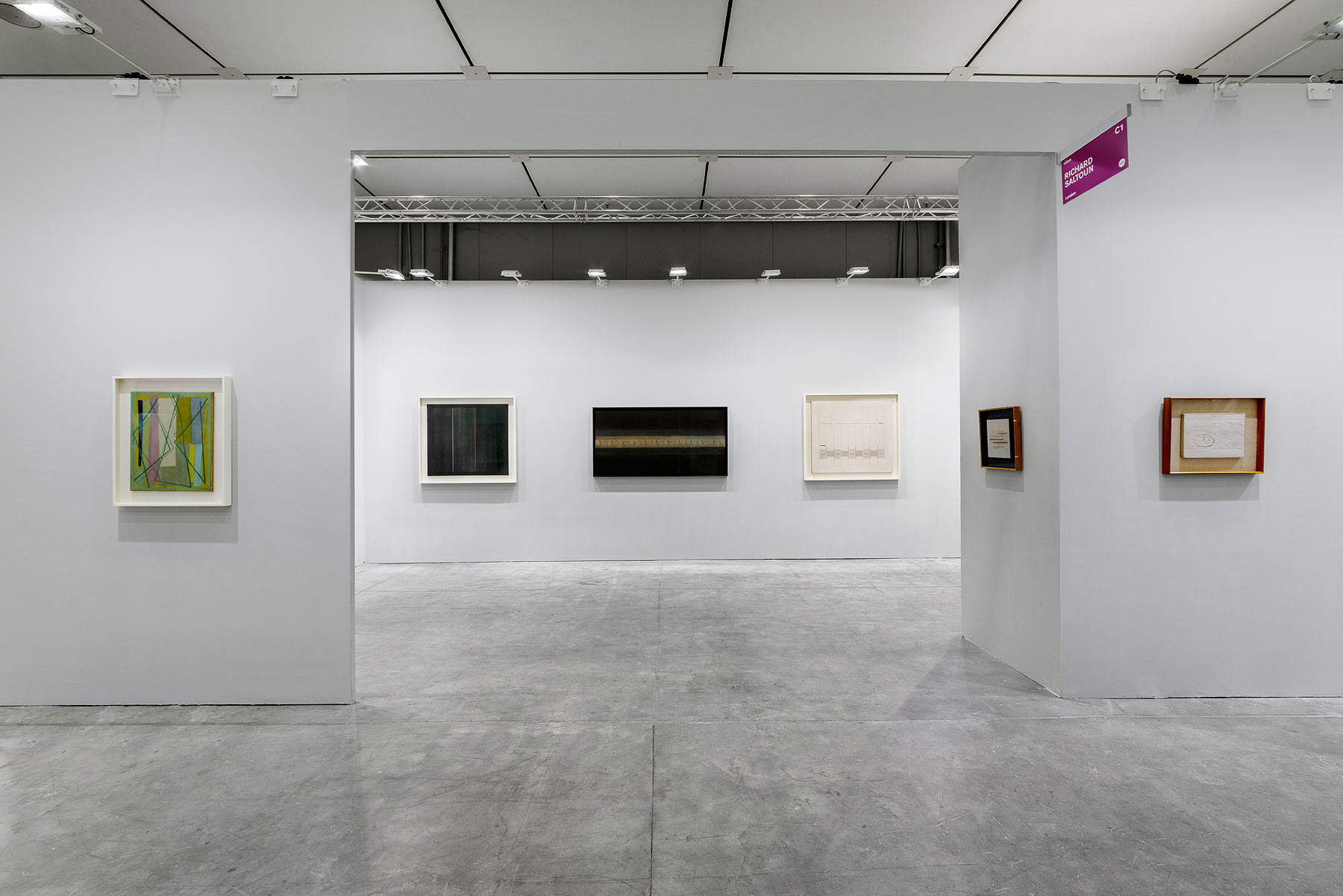 |
| Installation view, Arte Fiera Bologna 2020, Bice Lazzari, Richard Saltoun Gallery. Ph. Credit Mattia Mognetti |
2. Shield Gallery (Hall 18, B/9)
Yet another fine proposal from the Focus section, with one of the highest-level stands: the in-depth look that Galleria dello Scudo (which, by the way, also deserves praise for its stand set up in the Main Section: the Veronese gallery always imposes itself among the best proposals both from an aesthetic and qualitative point of view) dedicates to Gastone Novelli (Vienna, 1925 - Milan, 1968), one of the most extraordinary figures of the 20th century, a countercurrent, free, cultured, anti-system, revolutionary painter, and of whom, moreover, this year the publishing house Nero has published a collection of his writings(we have talked about it here). This is nothing new because the Galleria dello Scudo has already offered in-depth studies on Novelli in the past, but since the Milanese artist is not often seen around, the idea of enriching the Focus section with a selection of his works is to be greeted more than positively.
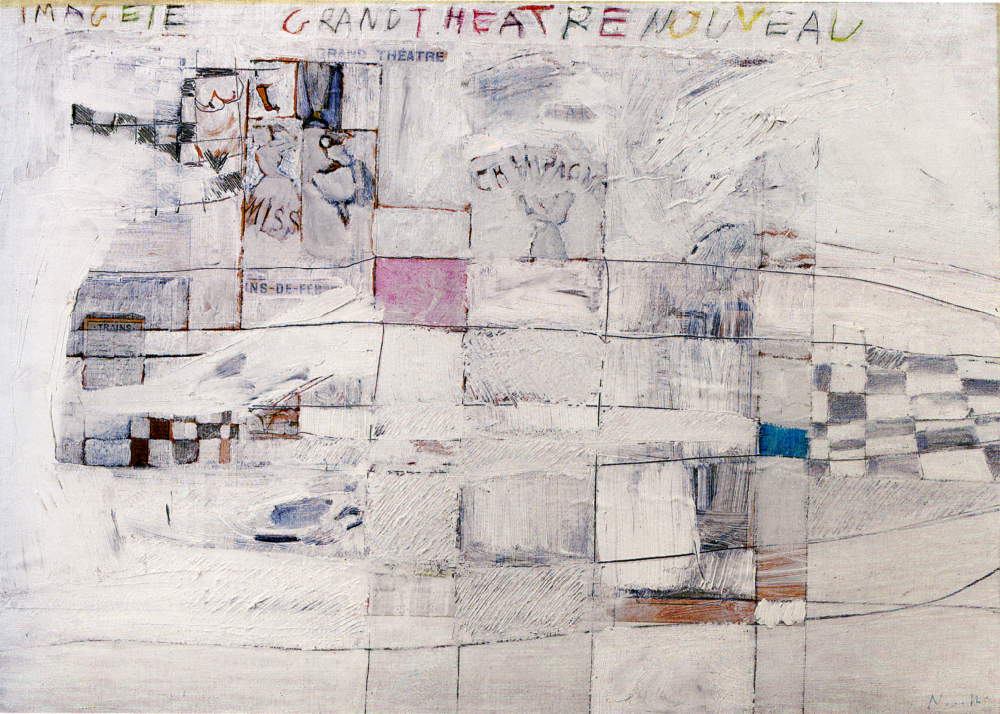 |
| Gastone Novelli, Grand theater (1962; oil, colored pastels, collage and pencil on canvas; 50 x 69.5 cm) |
3. Di Paolo (Hall 18, C/10)
The Di Paolo Arte gallery, founded in Bologna in 2003 thanks to the work of Nicolò Di Paolo and Fabio Di Paolo, focuses on three heavy names: Hans Hartung (Leipzig, 1904 - Antibes, 1989), Mattia Moreni (Pavia, 1920 - Brisighella, 1999) and Tancredi Parmeggiani (Feltre, 1927 - Rome, 1964). Pleasantly impressive above all is the section of the booth reserved for the works of Mattia Moreni, a great artist of the twentieth century, now historicized, but whose name has not yet established itself like that of others: there is, however, growing attention to him. And the works that Di Paolo Arte exhibits are among the best that the public can encounter at Arte Fiera.
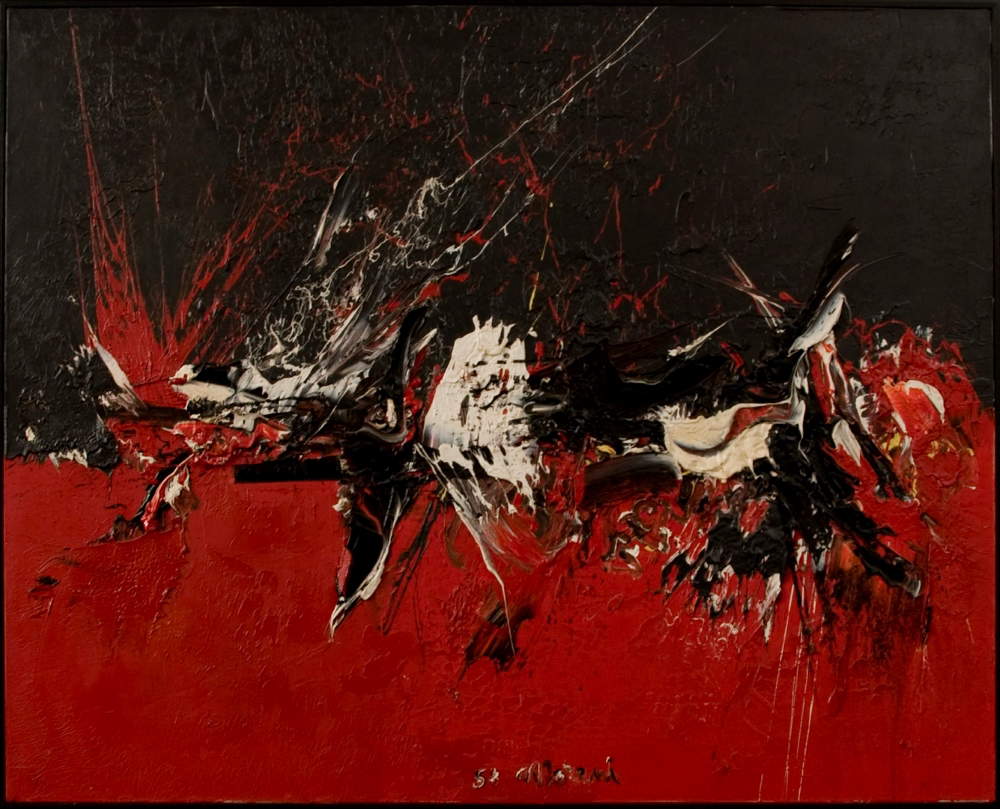 |
| Mattia Moreni, Rouge (1958; oil on canvas, 80 x 100 cm) |
4. Bonioni (Hall 18, C/23)
There are those who consider Piero Fogliati (Canelli, 1930 - Turin, 2016) a tremendously underrated artist. Yet his research on perception, light and colors, using very simple means and aiming to understand the mechanisms by which the mind processes certain sensory data, has several merits. Particularly remembered by him is the Fantastic City, a set of urban interventions that intended to transform a series of stimuli from sound, light and movement into aesthetic experiences. For him, moreover, also two appearances at the Venice Biennale (in 1978 and 1986). So the proposal of the Bonioni Gallery of Reggio Emilia is interesting, which dedicates its entire booth to Fogliati, bringing to the fair a good body of his works, including the amusing Mechanical Prisms and the sophisticated Virtual Real.
 |
| Bonioni’s booth |
5. Andrea Ingenito (Hall 18, D/20)
The Neapolitan gallery Andrea Ingenito, founded in 2008, has focused on two names this year: Valentino Vago (Barlassina, 1931 - Milan, 2018) and Lello Masucci (Naples, 1948). It is an encounter that works, between the late master whose work is gaining more and more acclaim, and a local artist accustomed to working on more than one language: the “Italian Rothko” (Valentino Vago has often been compared to the great American, for that yearning for infinity and for those dips in light that are reminiscent of Rothko, with respect to whom, however, Vago developed his thinking independently) and the Neapolitan painter who combines tradition and digital dialogue convincingly.
 |
| Andrea Ingenito Gallery’s booth |
6. Biasutti&Biasutti (Hall 18, A/11)
The Turin-based Biasutti&Biasutti gallery, founded in 2000 by Attilio Biasutti together with his sons Giuseppe and Paola, specializes in twentieth-century art, and the booth it is proposing this year at Arte Fiera offers us a kind of “episodic” journey through some of the important stages in the art of the last century, with a preponderance of Piedmontese names. They range from the international situationist with an entire wall dedicated to Pinot Gallizio (Giuseppe Gallizio; Alba, 1902 - 1964) to the out-of-the-box art of Carol Rama (Turin, 1918 - 2015), from the nouveau réalisme of Daniel Spoerri (Galaţi, 1930) to the gardens of Piero Gilardi (Turin, 1942). Four artists who make up a stand of good caliber.
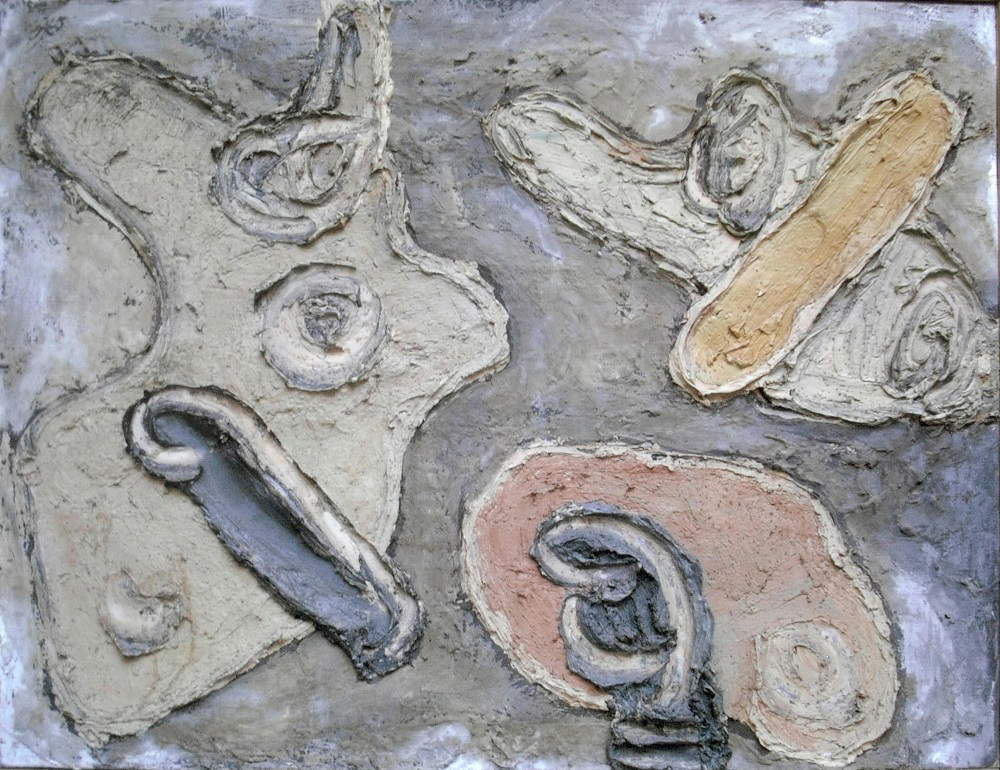 |
| Pinot Gallizio, Untitled (1963; mixed media on paper applied to jute canvas, 89 x 116.5 cm) |
7. Forni (Hall 18, B/38)
An interesting mix that of Forni, a historic Bolognese gallery founded in 1967 and accustomed to working with both Italian and foreign artists. A soul that is inevitably reflected on the Arte Fiera booth, where the works of Italians Tommaso Ottieri (Naples, 1971) and Giovanni Spazzini (Milan, 1951) unfold, as well as those of Frenchman Quentin Garel (Paris, 1975) and Spaniard Alejandro Quincoces (Bilbao, 1951). The nocturnal cities teeming with lights painted by Ottieri converse with the foggy, almost impressionistic metropolises of Quincoces, while Garel’s bizarre animals counterbalance Spazzini’s still lifes.
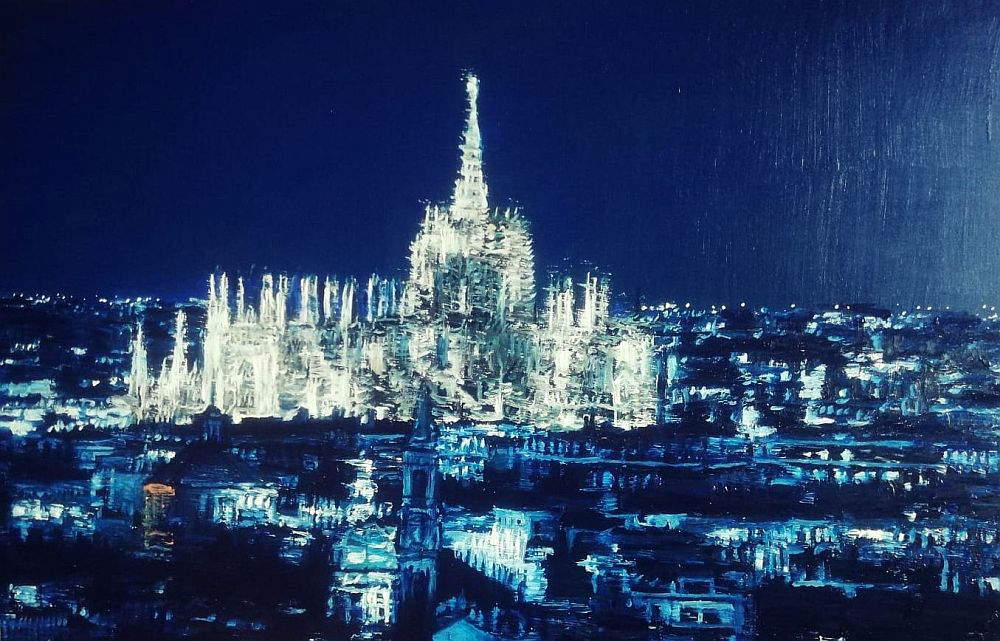 |
| Tommaso Ottieri, Milan, Nocturne (2019; oil on panel, 40 x 60 cm) |
8. Pinksummer (Hall 15, A/26)
Pinksummer from Genoa is participating in two sections: Photography and Moving Images and Painting XXI. And it is the latter that we want to talk about, because Pinksummer’s proposal is really of great interest: it is a single show by the Portuguese Jorge Queiroz (Lisbon, 1966) who, admittedly, is not really a young man, but he is a figure to be reckoned with, partly because he is the first painter presented by Pinksummer, partly because one could say that his inventive capacity and imagination know no boundaries, partly because, from the Symbolists to Bosch, the references seem to be many, and partly because looking at a painting by Queiroz is equivalent to taking a kind of journey into a world that is at once chaotic, dreamlike, imagined. The works at the Pinksummer booth are a selection of those Queiroz exhibited last fall in his solo show at the Genoa gallery.
 |
| Pinksummer’s booth |
9. De Cardenas (Hall 15, A/6)
Monica De Cardenas’ 1992 gallery, founded in Milan, Italy, is a fine participant in the Pittura XXI section, earning plaudits: works by Gianluca Di Pasquale (Rome, 1971) and Englishman Ivan Seal (Stockport, 1973) are on display. Di Pasquale, who has been a member of the De Cardenas gallery’s artists for years, proposes “rarefied and immaculate landscapes, made up almost only of figures painted with precise brushstrokes within a wide white space, which from time to time becomes mountain, sea, square or street” (as the presentation of his solo show held precisely at De Cardenas in 2014 read), while Seal, who exhibited for the first time at the Milan gallery in 2019, proposes visions that fuse together elements of reality with others that instead seem to come from a dream. The resulting dialogue represents one of the peaks of sophistication in this edition of Arte Fiera.
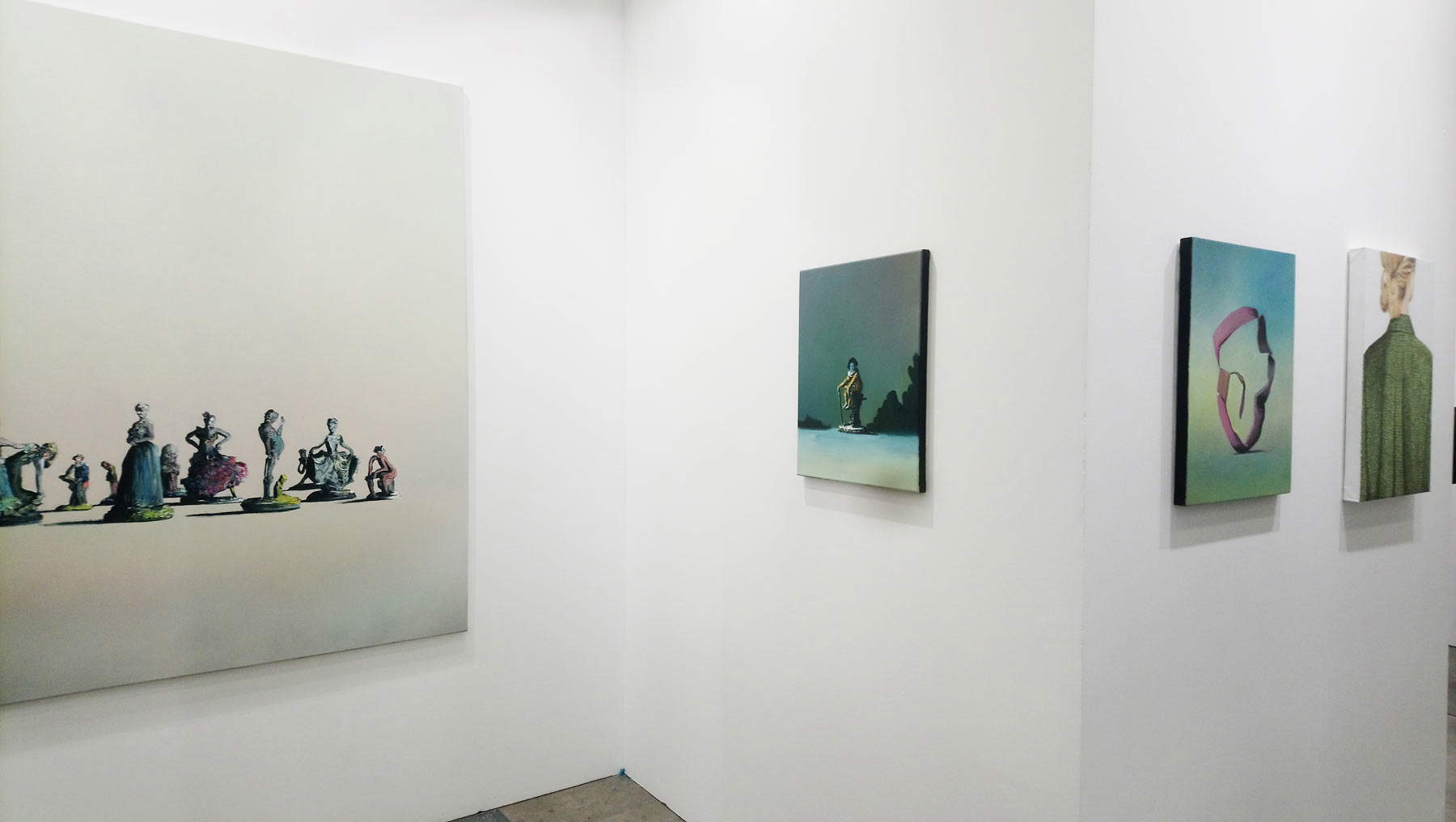 |
| De Cardenas’ booth |
10. Podbielski Contemporary (Hall 15, D/18)
Our “palm” for the best booth in the Photography and Moving Images section goes to Podbielski for the quality and coherence of its proposal: a sort of small exhibition on the theme of territory that puts in dialogue with each other the works of three photographers, Massimiliano Gatti (Pavia, 1981), Giulio di Sturco (Milan, 1979) and Yuval Yairi (Tel Aviv, 1961). The archaeological sites of Nineveh, the desert of Israel, and the banks of the Ganges in India are the stages of a journey intended to make us reflect on the identity “of the space inhabited, shaped, explored, threatened and devastated by man,” as we read in the presentation of the project. A reflection that also ranges over the medium of photography itself, always suspended between two poles: evoking and documenting.
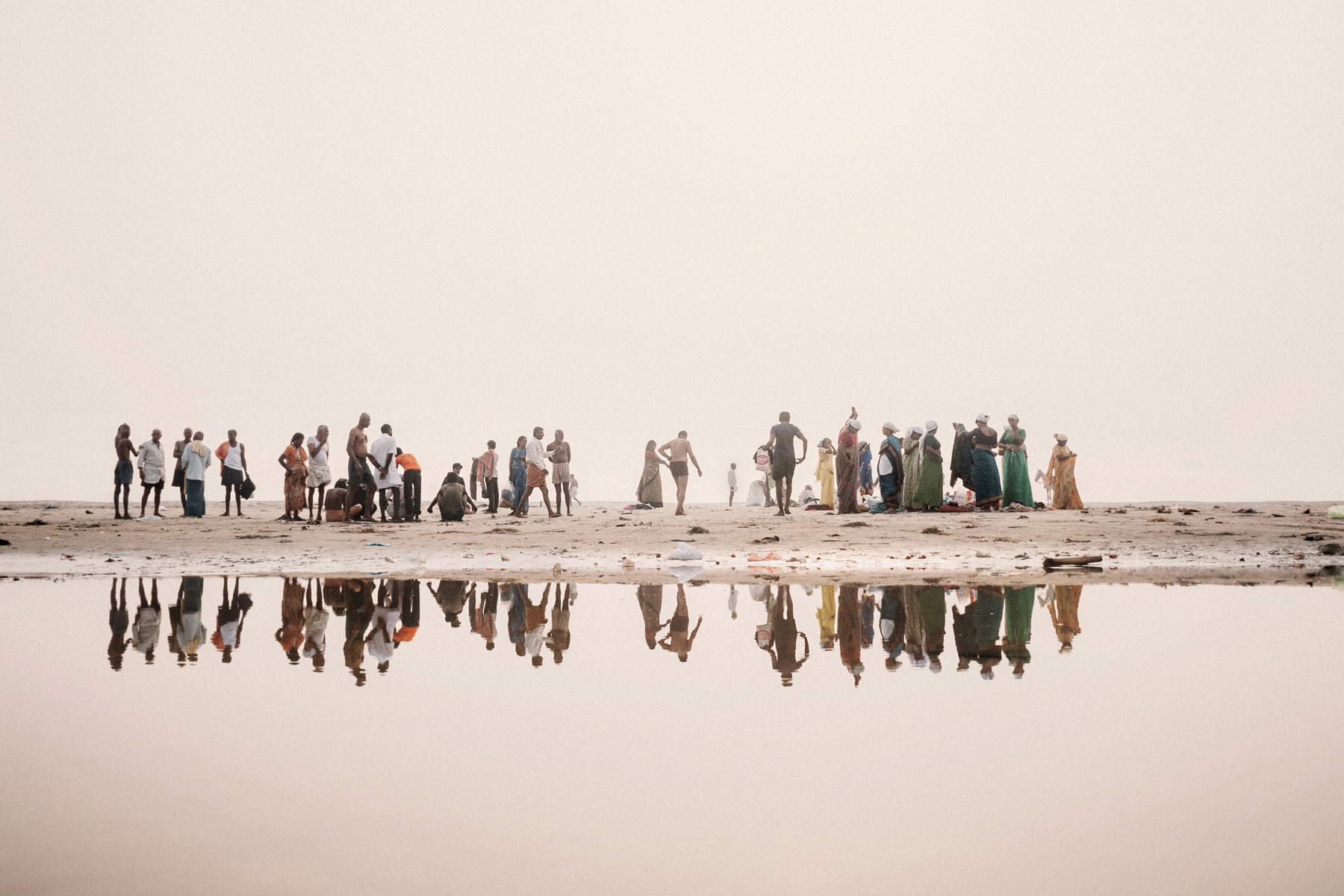 |
| Giulio Di Sturco, Gangma (2014; fine art print on Hahnemühle PhotoRag Satin paper, 100 x 150 cm) |
Special Mentions.
We award three special mentions for the uniqueness of the proposal to MLB - Maria Livia Brunelli, with a delicate and elegant solo show by photographer Anna Di Prospero (Rome, 1987), to Eduardo Secci Contemporary participating in the Pittura XXI section with works by young painters Chris Hood (Atlanta, 1984) and Pierre Knop (Nancy, 1982), and to G. A.M. - Galleria Arte Maggiore, on the other hand, which presents itself in the Main Section with a lunge on four Bolognese artists (Morandi, Sissi, Bertozzi&Casoni and Ontani). As anticipated, we will dedicate as many focuses to these three galleries in the coming hours.
Warning: the translation into English of the original Italian article was created using automatic tools. We undertake to review all articles, but we do not guarantee the total absence of inaccuracies in the translation due to the program. You can find the original by clicking on the ITA button. If you find any mistake,please contact us.